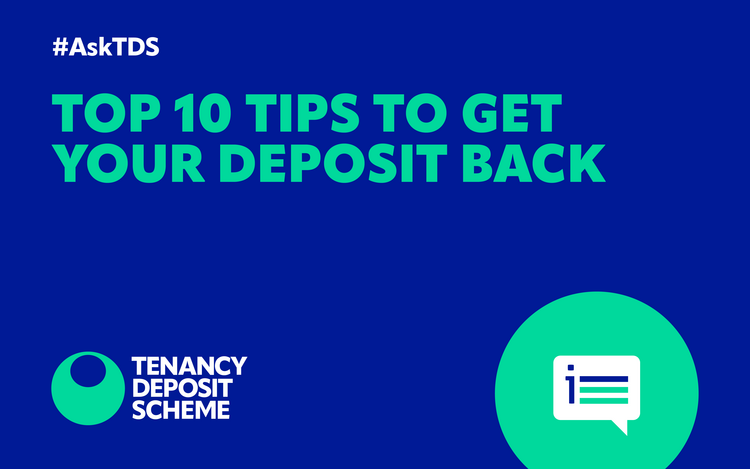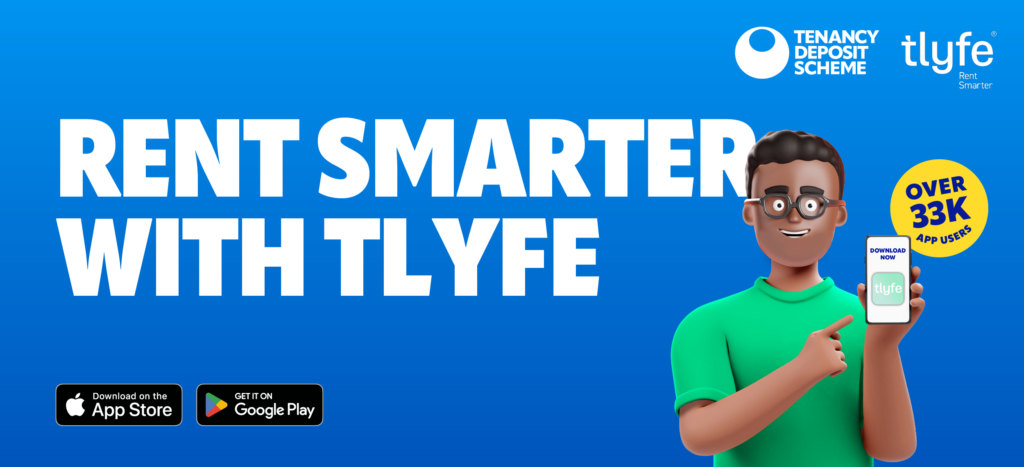
Nobody wants to see their deposit disappear due to deductions at the end of a tenancy! Here, the Tenancy Deposit Scheme offers expert advice for tenants to help you steer clear of unnecessary deductions from your deposit.
Before you put pen to paper, take a good look at your tenancy agreement. Are you absolutely clear on what you’re signing up for? Remember, terms can differ between landlords and agencies. Understanding your rights and responsibilities as a tenant beforehand is key to avoiding any potential disputes later on.
Have you received confirmation that your deposit is protected, along with the prescribed information, within 30 days of payment? If not, it’s time to reach out to your letting agent or landlord. You can also verify the protection status of your deposit with TDS here.
A property inventory is a detailed record of a property’s condition and its contents at the beginning and end of a tenancy. It includes a report on everything from décor and cleanliness, to structural elements like floors and ceilings.
The inventory/check-in process isn’t just another task to tick off your list – it’s your chance to protect yourself. These documents serve as crucial evidence in case of any deposit disputes down the line. Take the time to carefully review and confirm the contents, condition, and cleanliness of the property before or shortly after your tenancy begins. If there’s anything you disagree with or want to highlight, now is your chance. It’s your opportunity to ensure everything is as it should be from the get-go.
If your agent or landlord hasn’t provided an inventory, it will be more difficult for them to prove damage was caused during your tenancy, though not impossible.
If you notice any broken items or damage in your rented property, it is important to check your tenancy agreement to learn how to report these issues. In case you have accidentally damaged or broken something, make sure to repair or replace it according to the terms of your agreement.
If you notice any issues in the property such as leaking pipes or blackening, don’t let them get worse, inform your landlord immediately to discuss the best course of action and get it confirmed in writing.
TDS offers a mid-tenancy mediation service, TDS Resolution, for unresolved mid-tenancy issues that may occur from issues like these.
Before you start making any changes to your rental property, it’s really important to check with your landlord. To avoid any misunderstandings or disputes at the end of your tenancy, get any changes agreed upon in writing. If you’re thinking of redecorating the place, make sure that you agree with your landlord beforehand, and don’t forget to double-check how the property should be returned to its original state when your tenancy comes to an end.
For example, if you agreed to paint a white wall yellow, does the landlord expect you to return it to white at the end of the tenancy and does it need to be painted to a professional standard? Consider this before making any changes and remember to rectify any changes, in line with what you agreed, before you move out.
It is important to ensure that you return the property to the same level of cleanliness as it was when you first moved in. This includes cleaning frequently missed areas such as extractor fans, appliances, and under kitchen units.
If the property includes a garden, it is equally important to ensure that it is returned in the same condition as when you first arrived. Don’t forget to check your inventory to remind yourself of how the property looked when you first moved in. This will help you to identify any areas that may have been overlooked.
Inviting your landlord to inspect the property a few weeks before you leave can help you identify any areas that require attention before you move out. This is an excellent way to resolve any issues before your check-out inspection and minimise the potential for deposit deductions or disputes.
Remember to take your meter readings on the day you leave. A quick photo of the meters should help to illustrate the date and time of these readings, so outstanding payments won’t come your way.
Make sure that you have properly locked up the property and return the keys directly to the landlord or agent in person, to avoid any chance of them getting lost in transit. You may also request a receipt to confirm that all the keys have been accepted, or alternatively, take a photo as proof of return for your own records.
If you’ve followed all the tenancy agreement rules and still find that your deposit is being deducted, don’t worry. The best solution is to communicate with your landlord. Take a closer look at the areas where they have proposed the deductions and compare them with the check-out inspection and the inventory. This will help you determine if the deductions are justified or not. If you find any counter-evidence, provide it to your landlord to resolve the issue amicably without taking any further action. In case of a dispute, TDS offers a free end-of-tenancy dispute resolution service that you can use.
The Tenancy Deposit Scheme is part of The Dispute Service (TDS), the largest tenancy deposit protection (by value) and resolution service provider in the UK making life easier for tens of thousands of agents, landlords, developers, and millions of tenants and homebuyers.
Our award-winning customer service is highly rated on both Trustpilot and Google, and we’re backed by the NRLA, Propertymark and RICS.
We provide quick and hassle-free online deposit protection, free guides and information in our online help centre, free dispute resolution and free mid-tenancy mediation for tenants and landlords.
Our free tenant lifecycle app, tlyfe, makes renting smarter. Manage your TDS deposit, get pre-qualified, build your credit ratings, and more.
